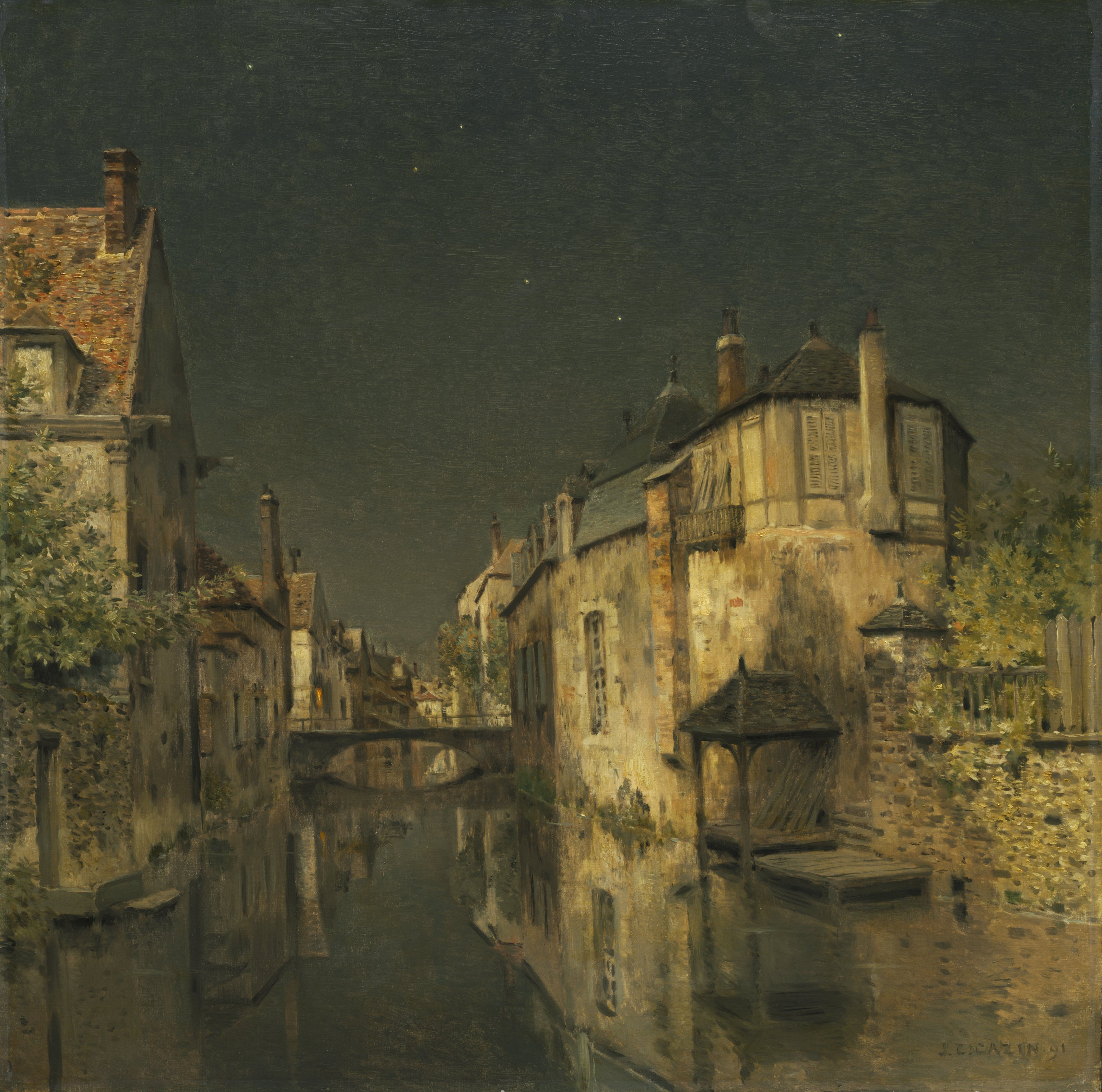The Cleveland Museum of Art
Collection Online as of April 25, 2024

Midnight
1891
(French, 1841–1901)
Framed: 113 x 112.4 x 11.4 cm (44 1/2 x 44 1/4 x 4 1/2 in.); Unframed: 88 x 89 cm (34 5/8 x 35 1/16 in.)
The Charles W. Harkness Gift 1923.602
Location: not on view
Did You Know?
Cazin preferred to paint in his studio using memory techniques learned in his artistic training which he later passed on to his own students.Description
This painting depicts Abbeville, a city in northern France famous for its canals and architecture. It lies near the seaport of Boulogne-sur-Mer, Cazin's hometown and where he spent the last decades of his life painting the countryside, beaches, and nearby towns. Cazin specialized in landscapes, often influenced by his knowledge of English and Dutch painters. The title, Midnight, and the image itself suggest silence and stillness—Cazin's hallmarks—but only rarely did he attain this almost surrealistic atmosphere. Cazin was educated in Paris at the famous Ecole Gratuite de Dessins (Free School of Drawing), an innovative and unorthodox institution teaching drawing from memory. He studied there with fellow artists Henri Fantin-Latour (1836–1904), Auguste Rodin (1840–1917), and Alphonse Legros (1837–1911). They all shared an interest in Symbolism—the movement that sees symbols in reality and perceives reality through symbols.- Shipped with two other works by Cazin from Knoedler Paris to the branch in New York, 16 May 1891 (stock number 6834), as "Night with Stars."Sold 12 November 1891 to R. K. McNeely, Philadelphia, as "Night," (Cazin's Studio). (Sales book no. 6, p. 314).Charles T. Yerkes, Philadelphia and Chicago, by 1893.New York sale, Estate of Mary Adelaide Yerkes, American Art Association, 19-20 February 1912 (lot 142, repr.), as "Moonlight at Midnight."Edward S. Harkness, Cleveland, OH.Donated to the Cleveland Museum of Art in 1923.
- "Bequest of Mrs. Charles W. Harkness." The Bulletin of the Cleveland Museum of Art 4, no. 4 (1917): 63. Mentioned: p. 63 www.jstor.orgThe Cleveland Museum of Art. Handbook of the Cleveland Museum of Art. Cleveland, OH: The Cleveland Museum of Art, 1925. Reproduced: p. 30 archive.orgThe Cleveland Museum of Art. Handbook of the Cleveland Museum of Art. Cleveland, OH: The Cleveland Museum of Art, 1928. Reproduced: p. 37 archive.orgArgencourt, Louise d', and Roger Diederen. Catalogue of Paintings. Pt. 4. European Paintings of the 19th Century. Cleveland: Cleveland Museum of Art, 1974. Mentioned and reproduced: P. 116-118, Vol. I, no. 44
- Paris, Champ de Mars. Salon (1891), no. 181, Minuit (repr.).Chicago. World's Columbian Exposition (1893), rev. cat., no. 3034, Midnight Moonlight, Abbeville, France, lent by Charles T. Yerkes, Chicago.
- {{cite web|title=Midnight|url=false|author=Jean-Charles Cazin|year=1891|access-date=25 April 2024|publisher=Cleveland Museum of Art}}
Source URL:
https://www.clevelandart.org/art/1923.602